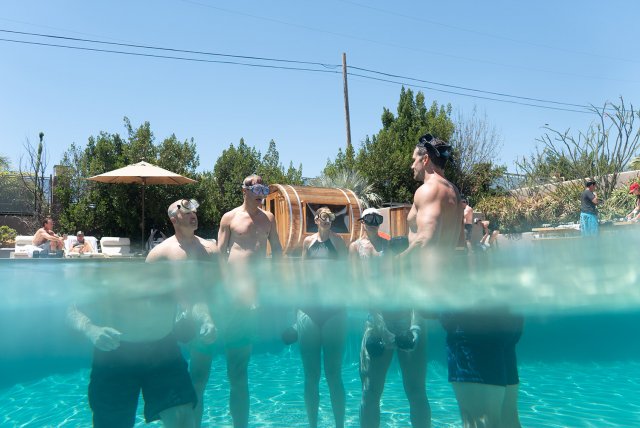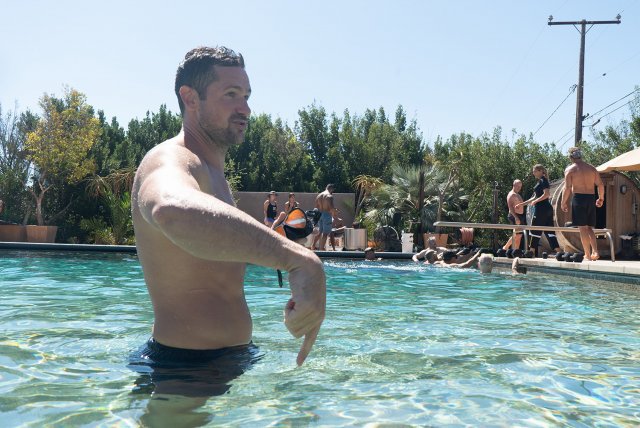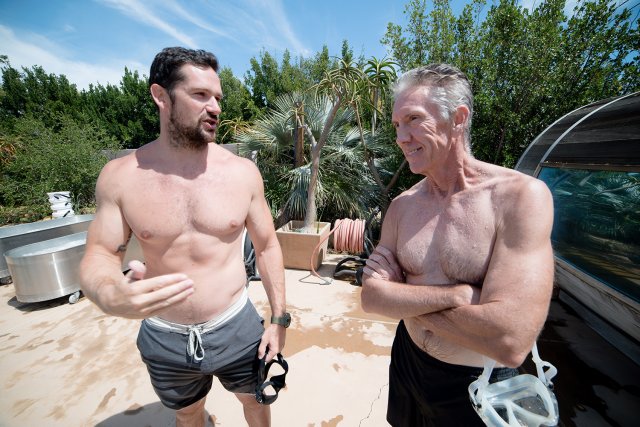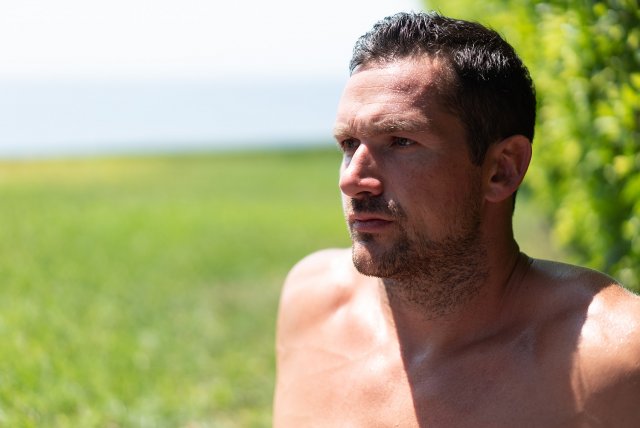XPT Spotlight: Certified Coach Mark Roberts
Age: 34
Birthplace: Greenwich
Current Hometown: Westlake Village, CA
Gym Name: Proactive Sports Performance
Social Handles: Instagram @markrobertsfitness
XPT Certified Coach Mark Roberts hails from Belfast in Northern Ireland. He’s been studying the science of sport and exercise since he was 15 years old. Before he took on a full-time fitness coaching career, Mark played rugby at both professional and national levels, but now dedicates his life to human performance and his family. He’s been a performance coach for ten years, with the last five years being spent as a post rehab specialist in Chicago. He currently resides in California, working with professional athletes and general population alike, implementing all pillars of XPT.
As a valuable asset to the XPT Team, Mark lives very close to co-founders Gabby Reece and Laird Hamilton and spends a lot of time training with the duo, as well as assisting with XPT Experiences and other events held at their Malibu home. “Mark is a living example of the XPT lifestyle,” said Gabby Reece. “He dedicates himself to learning, improving and experimenting with new training modality and nutritional concepts.”
When asked about Mark’s coaching style, specifically when it comes to his work coaching XPT Experience and event participants, Gabby added, “Mark is an expert in his field but what I appreciate is that he is always expanding his platform to be the best guide possible. He is tough and loving. Mark’s good nature along with expertise and capabilities is an enhancement to any Experience. I always look forward to seeing and working with Mark personally and professionally. His lack of ego and fluidity as a professional is a rare commodity.”
XPT’s Performance Director also had many positive things to say about Mark as the person who trained him through the XPT Certification course. “Mark’s years of experience competing as an elite athlete (Professional Rugby) along with his experience training clients at the highest levels of performance allow him to excel in implementing the XPT methodology across a vast clientele demographic. Mark is an exceptional communicator and does a great job breaking down the ‘why’ and ‘how’ of XPT into digestible pieces, so anybody can understand.”
We recently sat down with Mark to ask him some questions about his background—specifically about his knowledge and implementation of XPT into his coaching practice. Get to know Mark and his success stories by reading this exclusive XPT Q&A.

XPT: How did you get connected with XPT and what drew you to the brand?
MR: Having been fortunate enough to work with Gabby over the last few years, I jumped at the opportunity to get involved with XPT. I’m a true believer in what it stands for and what XPT training has done for me personally.
XPT: What has it been like to work with and learn from people like Laird Hamilton, Gabby Reece, and PJ Nestler? Any key lessons or stories you can share that have been impactful to you?
MR: Working with Laird & Gabby has been a truly life altering experience. They provide an environment that is so inviting, impactful, and inspiring, that I can’t help but want to keep improving and educating myself on optimal human performance.
Paired with PJ and his incredible thirst for knowledge and the way he presents our material really keeps me on my toes when it comes to studying material and mastering the components of XPT. Not to mention, he’s a pretty sound bloke!
I think the key lesson is to always be a student.

XPT: Do you have a favorite XPT methodology or pillar you resonate with most? Maybe one you’re good at, or one you need the most work on or spend the most time doing/coaching?
MR: From a coaching standpoint, breathing is my go-to XPT pillar. I’ve had the greatest impact on clients with simple breathing protocols. While breathing is one of the most natural things we do, for most its very dysfunctional and has a huge impact on physical and mental health. With the implementation of XPT’s breathing protocols, we are reversing those dysfunctions both mentally and physically.
From a personal standpoint, it has to be the water. It gives me such an ability to focus everything on one task. It provides me with such a sense of accomplishment every time I hit a breakthrough. Confronting the stress of being underwater with weight and zero oxygen left, yet pushing on has such a knock-on effect to my day to day life.
XPT: What are some of your coaching philosophies when it comes to XPT, with such a vast group of clientele?
MR: First and foremost, it starts and ends with breathwork. Everybody needs breathwork just like everybody needs mobility. Yes, we have a vast array of clientele from professional athletes to everyday people wanting to step out of their comfort zone, but we are all humans and everything is relative. One man’s 10 pounds down is another man’s super bowl. I really keep to simple human performance but regress it and progress it where necessary depending on who it is I’m working with.

XPT: As a former professional athlete, how do you think the XPT philosophy and techniques resonate with athletes like yourself? Same question for average/everyday people?
MR: For athletes, I think it’s the most underutilized performance hack that isn’t getting the attention it deserves because it’s so simple. Dealing with the stresses and emotions that come with being a professional athlete, XPT’s breathwork is king. Creating simple protocols that can help calm your nervous system. Which creates tolerance to CO2 and that can help you recover faster. It’s a no brainer.
Pool work, and its great ability to be so ballistic yet so easy on the joints provides a great environment for athletes to really push the boundaries of plyo work, all the while working in an intermittent hypoxic state. Heat and ice also provide an addition to both recovery and when protocoled right; additional stress adaptation.
For the everyday person it all provides a great way to really stress the body into adaptation without a) taking up too much time and b) providing a very low impact environment with little to no risk of injury. It really forces you out of your comfort zone.
XPT: What are some of the success stories you’ve seen in implementing XPT Breathing, Pool Training, and Recovery methods with your athletes?
MR: When it comes to the breathwork, it is mostly their ability to push further into their conditioning with nose only breathing. Therefore, providing them with more gears during competition and improving athletic endurance. It also has been proven to be a big help post-practice and -competition to help calm the system into a parasympathetic where the body is in its rest digest state.
Working with basketball players in the pool has substantially helped maintain heavy plyo work, all the while saving the joints from the landing impacts that are normally associated with land-based work.
Ice has best been seen to help my athletes concur the breathing protocols under stress. Their ability to deal with the very cold water (as a stressor) attaching thought to the breath work to calm the system inside 30s, therefore allowing the body to reap the benefits of cold water immersion from a calm and controlled mind

XPT: What would be your quick advice to someone considering XPT as a client or becoming a certified coach, but isn’t sure if it’s for him/her?
MR: For a prospective client, I would say let your experience guide you. XPT has such a profound effect on the body and mind in such a short amount of time you, will leave thinking only of how to plug this into your daily life.
As a prospective coach, I’d say the same thing. Let your experience guide you. Get involved with an Experience or a Workshop and see for yourself the profound effects XPT has. As a coach, you should be thinking of how to implement it into your daily training protocols. Simple: Get certified!
XPT: Can you leave us with your favorite XPT memory or story?
MR: My favorite memory is of my first experience and the breath work we did on the beach with Laird. After 45 minutes exploring the breath with a vast range of cadences, we finished on a max hypoxic breath hold. Where over the course of the four minutes I held my breath. I was able to truly let go for the first time I can remember in my life and see very, very deep into myself. I experienced something so profound that it left me emotional for around 20 minutes after the fact.
It was also from that moment on that I made the decision that XPT was what I was going to live and breathe. It started my journey to move here to California and to work with the most amazing human beings I have ever had the privilege of being around.
